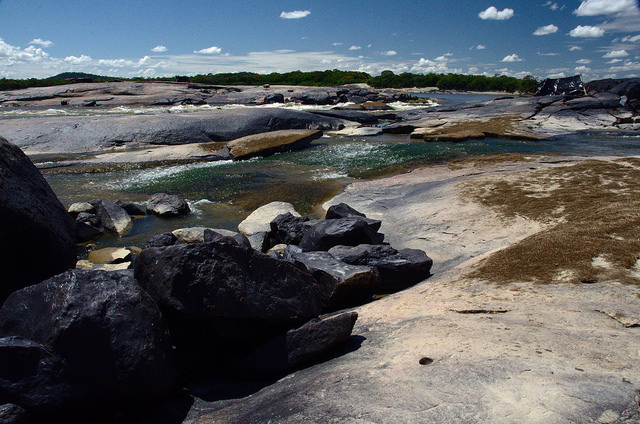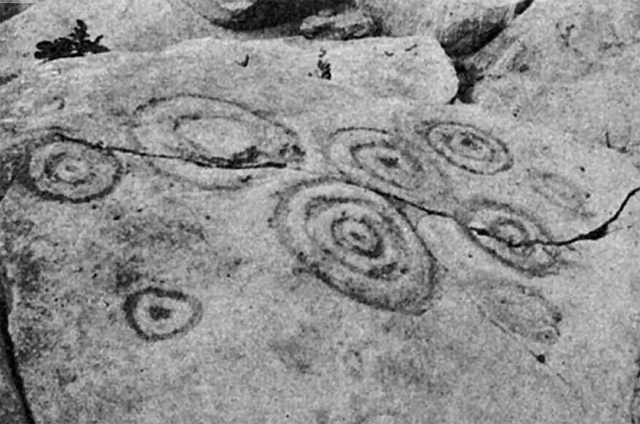Since the Piaroa believed that the sun plus Wahari, one of their mythic figures, were born at the Atures Rapids of the Orinoco River, it isn’t surprising that their ancestors carved large petroglyphs there. A news report last week described the setting and the scientific work by archaeologists to photograph and describe the huge engravings, many of which were carved on exposed rock faces in the middle of the river.

Philip Riris, an archaeologist from University College London, used camera-equipped drones to photograph and study the engravings on the rocks, which are surrounded by the rapids. They are among the largest petroglyphs anywhere in the world. One engraving portrays a horned snake that is 98 feet long; a panel, which is over 3,200 square feet in size, has 93 petroglyphs. The scientist studied eight groups of engravings on the boulders and the exposed bedrock of five different islands in the river.
Riris wrote in his report on the investigation that at least some of the petroglyphs depict events that occurred in Piaroa myths. The enormous horned snake may represent a myth about Wahari, the Piaroa creator deity, slaying a monstrous serpent. He said that other petroglyphs showing human figures surrounding a flute player may have depicted a renewal ritual that coincided with the seasonal emergence of the rocks when the river levels dropped and the islands were easier to reach.

The importance of the findings, the archaeologist said, was what they reveal about the ancient cultures of the local indigenous people. “These engravings are embedded in the everyday—how people lived and traveled in the region, the importance of aquatic resources and the seasonal rhythmic rising and falling of the water,” he said. Some of the petroglyphs are believed to be 2,000 years old.
A press release from the university indicated that the petroglyphs have been studied before, but never in as much detail. It quoted the principal investigator of the project, Dr. José Oliver at the UCL Institute of Archaeology, as saying that the Atures Rapids was a trading center in pre-Columbian South America. “Archaeological evidence suggests that traders from diverse and distant regions interacted in this area over the course of two millennia before European colonization” he said. The purpose of the project is to investigate those cultural interactions. Alexander von Humboldt studied the petroglyphs when he traveled along the river in 1800, as have several archaeologists over the past half-century.